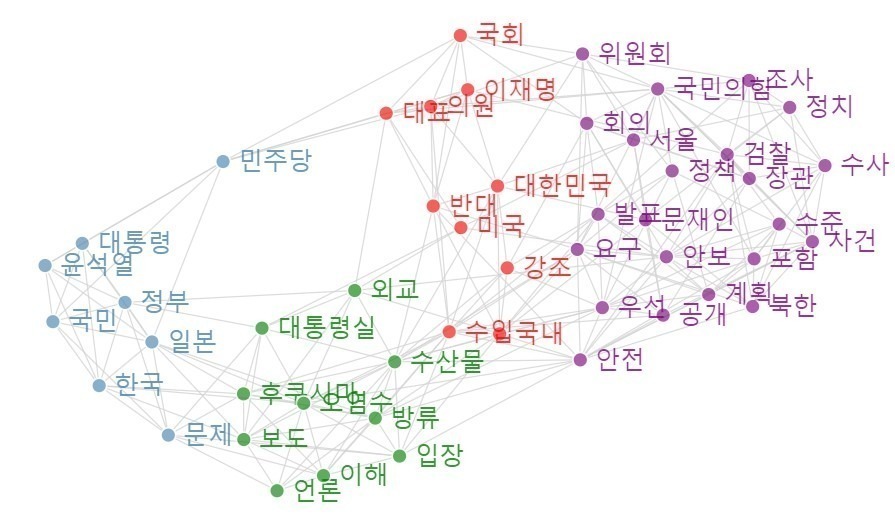[동아시아포럼] 2% 부족한 일본 방위 전략 개정
러시아·중국 적대 공식화한 일본, 2013년에 비교해 뚜렷한 변화 ‘대만은 매우 중요한 파트너이자 친구’, 남중국해 개입 의지? 구체적인 내용 부재 및 불분명한 예산 책정에 의문점 남아
[동아시아포럼]은 EAST ASIA FORUM에서 전하는 동아시아 정책 동향을 담았습니다. EAST ASIA FORUM은 오스트레일리아 국립대학교(Australia National University)의 크로퍼드 공공정책 학교(Crawford School of Public Policy) 산하의 공공정책과 관련된 정치, 경제, 비즈니스, 법률, 안보, 국제관계 및 사회에 대한 분석 및 연구를 위한 플랫폼입니다.
저희 폴리시코리아(The Policy Korea)와 영어 원문 공개 조건으로 콘텐츠 제휴가 진행 중입니다.

가와시마 신(川島 真)은 도쿄대학교 예술과학대학원 국제관계학과 교수입니다. 홋카이도 대학(1998-2006)과 도쿄 대학(2006-2015)에서 부교수로 경력을 시작했으며 2015년부터 교수로 재직하고 있습니다. 또한 국가안전보장국 선임연구원(2014~2018), 일본과학위원회 준회원(2014~), 외무성 외교기록 기밀해제추진위원회 자문위원(2017~), 외무성 영토주권정책기획조정실 영토보전에 관한 커뮤니케이션 자문위원(2018~2019), 후지산 대화 학술자문위원으로 활동하고 있습니다.
2022년 12월 일본 정부는 국가 안보 전략, 국방 전략, 방위력 증강 계획 등 세 가지 주요 안보 문서를 발표했다. 이 문서들은 각각 이전 버전의 개정판이다. 일본 정부는 현재 일본의 안보 환경을 고려하여 몇 가지 주요 변경 사항을 적용했다.
문서에서 가장 눈에 띄는 변화는 세 가지다. 첫째, 중국과 관련된 표현이 바뀌었다. 이전에는 중국의 활동에 대해 ‘우려’를 표명했지만 새로운 문구에는 ‘일본과 국제사회에 심각한 우려가 되고 있으며 전례 없는 최대의 전략적 도전이 되고 있다’고 명시했다.
둘째, 이 문서는 ‘자위를 위해 필요한 최소한의 조치’를 제정하겠다는 일본의 약속을 재확인한다. 이러한 조치에는 일본이 적 기지에 대한 반격 능력을 보유해야 한다는 요구를 포함한다. 셋째, 문서에 따르면 일본의 국방 예산은 향후 5년 동안 40조 엔 이상으로 늘어난다.
이 세 가지 안보 문서의 개정은 일본이 중국, 러시아, 북한이라는 세 가지 주요 ‘전선’에 직면하고 있음을 분명히 한다. 이는 2013년 국가 안보 전략에서 가장 큰 변화다. 그 버전은 다음과 같이 명시했다: ‘동아시아의 안보 환경이 날로 엄중해지는 상황에서 일본은 안보와 에너지를 포함한 모든 분야에서 러시아와의 협력을 증진하는 것이 중요하다’고 명시했다. 이러한 표현에서 현재 일본 정부의 러시아에 대한 입장 전환은 뚜렷한 변화다. 또한 중국을 일본의 주요 위협으로 묘사하고 있다는 것은 말할 필요도 없다.
반격 능력은 거의 전적으로 중국의 단거리 미사일에 대한 대응을 목표로 한다. 그러나 세 문서는 이러한 능력이 ‘자위를 위해 필요한 최소한의 조치’라는 틀 안에 있다고 주장한다. 이러한 표현은 일본이 중국에 대한 배려를 표현하기 위한 것으로 보인다. 반격 능력을 보유하겠다는 의사를 밝힌 것은 일본이 남중국해와 대만 해협에서 중국의 잠재적 군사 행동을 막기 위해 전력을 강화하겠다는 신호로 해석할 수도 있다.
세 문건은 또한 ‘대만은 일본의 매우 중요한 파트너이자 소중한 친구이며 일본과 근본적인 가치를 공유하고 있다’고 언급하며 ‘대만 비상사태’에 대한 경종을 울리고 있다. 이 문서들은 또한 ‘대만 해협의 평화와 안정은 국제사회의 안보와 번영을 위해 필수 불가결한 요소이며, 일본은 양안 문제가 평화적으로 해결되기를 기대하는 입장을 바탕으로 다양한 노력을 계속할 것’이라고 주장하고 있다. 대만에 대한 이러한 집중적인 관심은 이번 개정안에서만 찾아볼 수 있는 특징이다.
일본 정부의 개정안은 일본의 안보 전략을 개편하고 여러 분야에서 새로운 지평을 열려고 한다. 그러나 이 전략이 일본의 안보 문제를 어느 정도까지 해결하고 어떻게 실행할 것인지에 대해서는 몇 가지 의문이 남아있다.
첫째, 이러한 보고서의 대부분은 일본 정부의 오랜 견해를 단순히 요약한 것으로, 새로운 내용이 많이 포함되어 있지는 않다. 일본의 대만 정책의 경우에도 일본이 대만 문제에 대해 ‘다양한 노력을 계속할 것’이라고만 언급하고 있다. 정확히 어떤 구체적인 조치가 요구되고 어떻게 실행될 수 있는지는 앞으로의 과제로 남겨져 있다. 안보백서는 일본 정부가 앞으로 나아갈 방향을 제시하고 있지만, 구체적인 내용이 적고 일본의 안보에 대한 명확한 비전을 제시하지 못하고 있다.
둘째, 이러한 정책의 예산 영향은 여전히 불분명하다. 일본 정부는 향후 5년간 40조 엔이 넘는 국방 예산을 책정했지만 이러한 지출을 충당하기 위해 어떤 수입원을 활용할 것인지에 대해서는 전혀 언급하지 않았다. 일본 재무성은 2차 세계대전 당시 일본 정부가 여러 차례 발행했던 전쟁채권에 대한 기억 때문에 국방 목적의 채권 발행을 주저해 왔다.
일본의 예산은 이미 막대한 사회보장 지출로 인해 균형을 잃었다. 하지만 정부의 국방 정책에 대한 재정적 뒷받침도 앞으로 결정해야 할 과제로 남았다.
국가 안보 전략, 국방 전략 및 방위력 증강 계획의 개정은 일본의 안보 정책에 중대한 변화를 예고한다. 이는 일본과 중국 및 러시아와의 관계 및 대응 능력과 관련이 있다. 그러나 정책 자체와 이를 실행하는 데 필요한 예산 조치에 대한 세부 사항은 추후에 결정하도록 남겨 두었다. 관찰자들은 이러한 정책이 어떻게 결실을 맺을지 계속 지켜봐야 할 것이다.
Japan’s updated defence strategy leaves crucial details to be determined
In December 2022, the Japanese government released three major security papers — the National Security Strategy, the National Defense Strategy and the Defense Buildup Plan. Each of these documents are revisions of earlier versions. The government made several key changes in light of Japan’s present security environment.
The most notable changes made in the documents are threefold. First, language related to China has shifted. Earlier language expressed ‘concern’ about China’s activities but new language states that they have ‘become a matter of serious concern for Japan and the international community, and present an unprecedented and the greatest strategic challenge’.
Second, the documents reaffirm Japan’s commitment to enacting the ‘minimum necessary measures for self-defen[c]e’. Such measures include a call for Japan to possess the ability to counterstrike against enemy bases. Third, the documents note that Japan’s defence budget will increase to over 40 trillion yen over the next five years.
The updated versions of these three security papers make it clear that Japan is facing three major ‘fronts’ — China, Russia and North Korea. This idea is the biggest change from the 2013 National Security Strategy. That version stated: ‘[u]nder the increasingly severe security environment in East Asia, it is critical for Japan to advance cooperation with Russia in all areas, including security and energy’. The shift away from such language to the government’s current stance on Russia is striking. It also goes without saying that these security papers portray China as Japan’s primary threat.
The ability to counterstrike is almost entirely aimed at responding to Chinese short-range missiles. But the three papers maintain that such a capability lies within the framework of being a ‘minimum necessary measure for self-defen[c]e’. This language is likely intended to enable Japan to express some consideration towards China. Communicating the intention to possess the ability to counterstrike could also be interpreted as a signal that Japan seeks to increase its power to stop potential Chinese military actions in the South China Sea and the Taiwan Strait.
The three papers also sound an alarm about a ‘Taiwan emergency’, noting that ‘Taiwan is an extremely important partner and a precious friend of Japan, with whom Japan shares fundamental values’. The documents further claim that ‘[p]eace and stability across the Taiwan Strait is an indispensable element for the security and prosperity of the international community, and Japan will continue to make various efforts based on its position that the cross-strait issues are expected to be resolved peacefully’. This intense focus on Taiwan is unique to this latest round of revisions.
The Japanese government’s revisions seek to revamp Japan’s security strategy and break new ground in several areas. But a few questions remain about how far the strategy goes in addressing Japan’s security challenges and how they will be implemented.
First, much of these papers simply summarise the Japanese government’s longstanding views — they do not necessarily contain a large amount of new content. Even in the case of Japan’s Taiwan policy, the papers note little more than that Japan will ‘continue to make various efforts’ on Taiwan issues. Precisely what specific actions are called for, and how they could be implemented, are left for the future. The security papers seek to map out the direction the government will take in the future, but they are light on specifics, and do not express a clear vision for Japan’s security.
Second, the budgetary impact of these policies remains unclear. Although the government has set a defence budget of over 40 trillion yen for the next five years, it has said nothing of the revenue sources it will draw on to fund such spending. Japan’s Ministry of Finance has been hesitant to issue bonds for defence purposes due to memories of the war bonds that the Japanese government issued a number of times over the course of the Second World War.
Japan’s budget has already fallen out of balance due to the country’s massive social security expenditures. The fiscal backing for the government’s defence policy, though, has also been left to be decided in the future.
The revisions made to the National Security Strategy, National Defense Strategy and Defense Buildup Planforeshadow significant changes to Japan’s security policy. These relate to Japan’s relations with China and Russia and its ability to counterstrike. But they have left the details — of both the policies themselves and the budgetary measures necessary to implement them — to be determined at a future date. Observers must continue to wait and see how these policies will come to fruition.



























